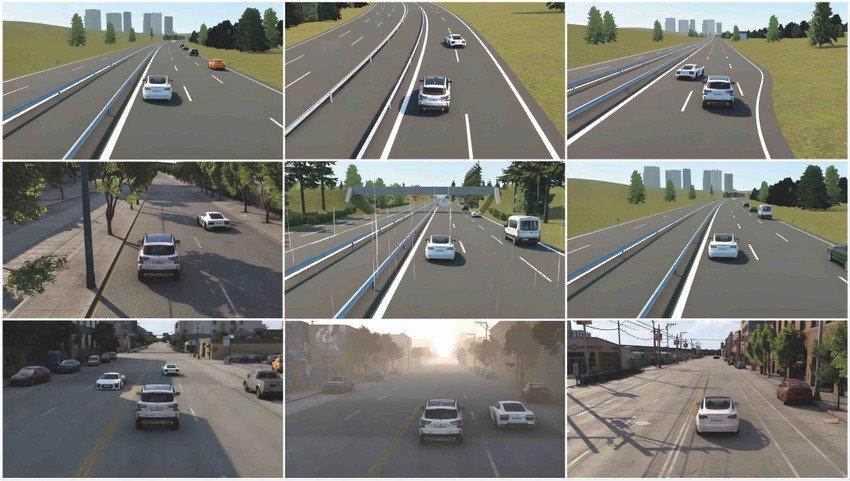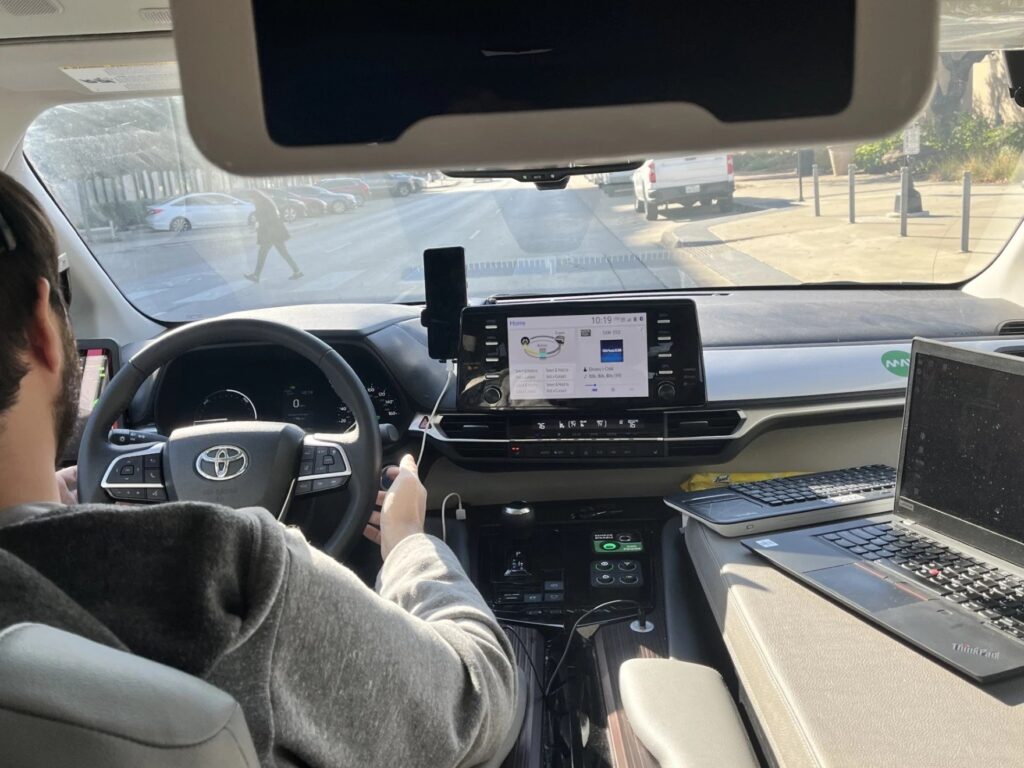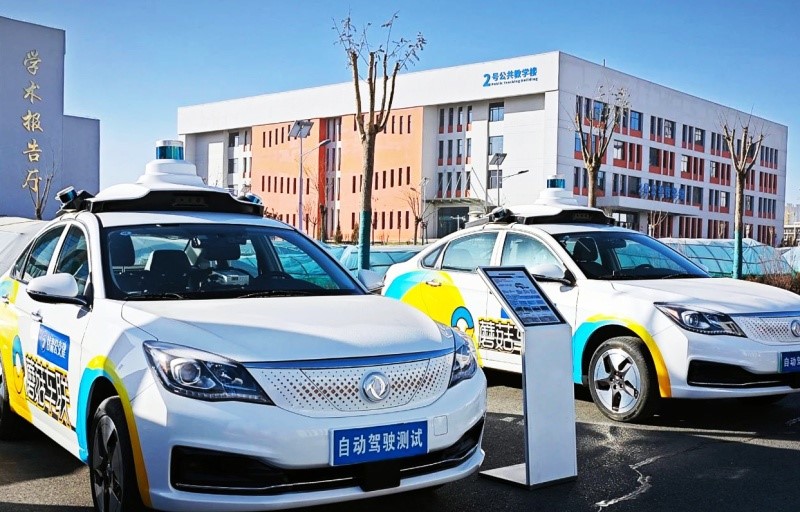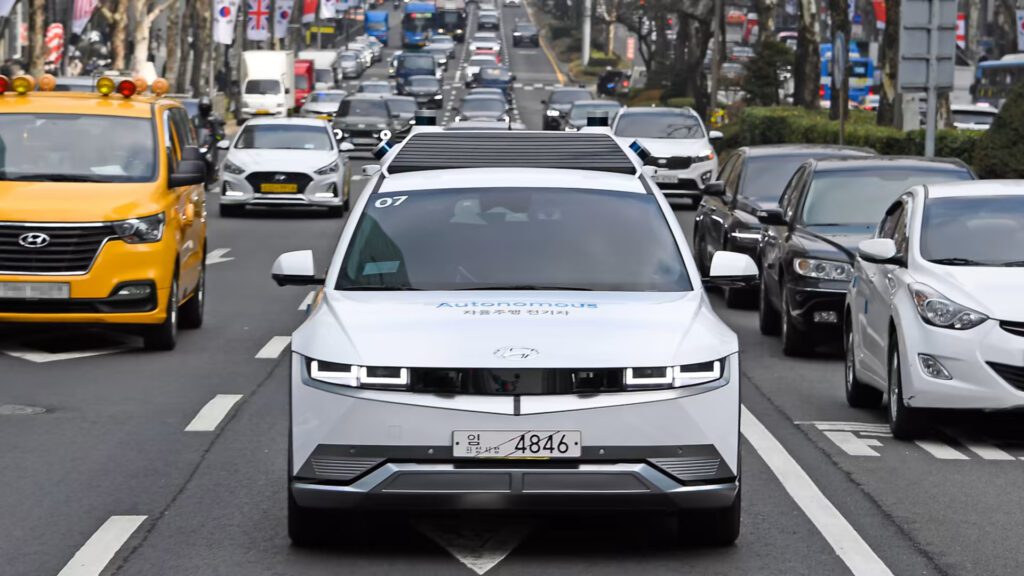
Vueron Newsletter
No. 71
2023.12.12
| Cyngn Announces New Patent for Autonomous Vehicle Solutions | ||
| Self-Driving Car Startup Raises $85M to Produce Automaker Tech | ||
| Gansu Province initiates autonomous driving pilot operation works | ||
| China imposes safety guidelines on autonomous ‘robo-taxis’ |
1. Cyngn Announces New Patent for Autonomous Vehicle Solutions
-
- Cyngn Inc. has been granted a new patent, US-11,837,089-B2, for its autonomous vehicle (AV) and driving solutions.
- The patent protects Cyngn’s innovative modular extensible behavioral decision-making system for autonomous driving, incorporating environmental elements to influence AV decisions.
- Lior Tal, Cyngn’s President and CEO, emphasizes the company’s commitment to building a robust patent portfolio to protect its intellectual property and provide unique value propositions for customers.
- Cyngn focuses on advanced automation through its DriveMod autonomous vehicle solutions, utilizing state-of-the-art sensors and AI technology for human-like driving capabilities across various vehicle types without significant infrastructure changes.
- This latest patent adds to Cyngn’s growing collection, bringing the total number of granted patents in the United States to 17.
- Cyngn’s patent family includes titles such as “Computing Acceleration System and Method for Autonomous Driving Systems,” “Flexible Multichannel Fusion Perception,” and “Autoadaptive LIDAR-Camera Synchronization System.”
- The company’s modular and flexible approach in its patent portfolio aims to address challenges faced by industrial organizations, such as labor shortages, costly security incidents, and the need for increased productivity, efficiency, and safety.

Cyngn’s focus on developing a strong patent portfolio indicates a commitment to protecting its technological innovations and staying competitive in the autonomous driving solutions market. By addressing challenges such as labor shortages and security incidents, Cyngn aims to position its autonomous vehicle technology as a solution that not only improves safety but also enhances productivity and efficiency in industrial settings.
2. Self-Driving Car Startup Raises $85M to Produce Automaker Tech
-
- Foretellix, an Israeli start-up specializing in Verification and Validation (V&V) solutions for Automated Driving Systems (ADS) and Advanced Driver Assistance Systems (ADAS), has raised $85 million in a series C funding round.
- The funding round was led by venture capital firm 83North, with participation from Isuzu, Temasek, Nvidia, Woven (Toyota’s growth fund), and the Volvo Group.
- This brings Foretellix’s total raised capital to $135 million, and the funds will be used to further develop its product portfolio and support global expansion.
- Foretellix’s V&V platform, known as Foretify, utilizes AI to analyze driving logs from road tests, generating millions of scenarios and safety checks in virtual simulation to identify edge cases and bugs efficiently.
- The technology aims to enhance the safety of ADS and ADAS, reduce development costs, and accelerate time-to-market for autonomous driving solutions.
- Major customers of Foretellix include Volvo, Toyota, Isuzu, and Daimler (via its subsidiary Torc Robotics).
- The CEO, Ziv Binyamini, highlighted that the funding will contribute to sustained growth, extending product lines for real-world and synthetic driving scenarios, and developing new AI capabilities.

Foretellix’s successful funding round reflects the growing importance of V&V solutions in the development of autonomous driving and advanced driver assistance technologies. The funds raised are earmarked for product line expansion, including the development of new AI capabilities, suggesting Foretellix’s commitment to staying at the forefront of V&V technology.
3. Arlington self-driving shuttle program passes 45,000 rides nearly 3 years into service
-
- A self-driving vehicle program in Arlington has logged 45,000 rides as of late November.
- The program, known as Arlington RAPID (Rideshare, Automation and Payment Integration Demonstration), is part of the city’s on-demand services available through the Arlington Transit app.
- Riders near the University of Texas Arlington (UTA) campus can use the app to request a self-driving van within a 1-square-mile service area.
- Autonomous Vehicle Operators (AVOs) are present to take over if needed, keeping their hands just above the steering wheel.
- May Mobility, the operating company, collaborates with UTA and Via, a microtransit company, to run the program.
- The goal of Arlington RAPID is to familiarize people with autonomous vehicle technology, ensuring safety and customer comfort.
- The program, which began nearly three years ago, has not reported any safety incidents or crashes to date.
- It is funded through spring 2025, and discussions are ongoing for securing future funding.
- Arlington has had previous autonomous vehicle programs, including an autonomous shuttle called Milo and an on-street ride program through Drive.ai.

Arlington RAPID’s success, with 45,000 logged rides, indicates public acceptance and usage of autonomous vehicles for daily commuting. May Mobility’s emphasis on safety, customer comfort, and autonomy prioritization aligns with the evolving approach to introducing autonomous technologies to the public.
4. Gansu Province initiates autonomous driving pilot operation works
-
- On December 6, Gansu Province’s Department of Transportation, Department of Industry and Information Technology, and Public Security Department jointly issued the first autonomous driving demonstration application license.
- The license unveiling includes the introduction of demonstration routes for both passenger and freight autonomous driving applications in Gansu Province.
- The commencement of the autonomous driving demonstration follows collaborative efforts by the three departments in Gansu since 2021 to conduct road tests for connected autonomous vehicles.
- Initially, three roads totaling 13 kilometers have been designated as intelligent connected vehicle testing and demonstration routes in the province.
- Two testing licenses have been issued, and as of now, Gansu has accumulated 5,923 kilometers in testing distance over 228 hours.
- Gansu’s autonomous driving plans involve three major demonstration application scenarios: passenger transport, freight transport in the Lanzhou New Area, and specialized vehicles (unmanned patrol, street cleaning, vending vehicles) within the premises of the Gansu Vocational and Technical College of Communications.

The issuance of Gansu Province’s first autonomous driving demonstration application license signifies a significant step in the province’s efforts to integrate autonomous driving technologies into its transportation system. Gansu’s focus on diverse application scenarios, including passenger and freight transport, as well as specialized vehicles for tasks such as patrol and street cleaning, underscores the broad potential applications of autonomous driving technology beyond traditional transportation.
5. China imposes safety guidelines on autonomous ‘robo-taxis’
-
- China’s Ministry of Transport has introduced safety guidelines for the operation of autonomous vehicles in public transport and the freight industry.
- The guidelines require autonomous robo-taxis in China to have at least one driver or ‘security inspector’ on board at all times, distinguishing this approach from the US where some robo-taxi companies operate without a representative in the vehicle.
- The regulations aim to address safety concerns and prevent incidents by ensuring human oversight in autonomous public transport vehicles.
- In the US, companies like Cruise faced challenges and investigations into incidents involving their autonomous cars, leading to suspensions of operations.
- China’s guidelines also stipulate that companies using autonomous vehicles for public transport must be qualified and licensed.
- Car manufacturers are allowed to collaborate with operators in compliance with these guidelines.
- This move is part of China’s broader initiative to increase the presence of semi- and fully-autonomous vehicles on its roads, aligning with recent approvals for public road trials of connected vehicles and infrastructure upgrades for autonomous cars.

China’s emphasis on the presence of a driver or security inspector in autonomous robo-taxis reflects a cautious approach to safety, addressing concerns raised by incidents in other regions where autonomous vehicles operate without direct human supervision. The global landscape for autonomous vehicles continues to evolve, with different countries implementing varying regulations to address safety concerns and foster responsible deployment in public spaces.
*Contents above are the opinion of ChatGPT, not an individual nor company

